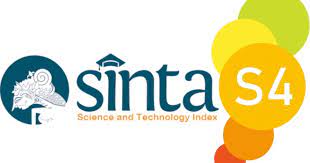Analyzing classroom interactions focusing on IRF patterns and turn-taking
DOI:
https://doi.org/10.22219/englie.v5i2.33535Keywords:
Communication Patterns, Interaction, IRF, Turn-TakingAbstract
This study aims to analyze patterns of interaction and turn-taking in the context of classroom learning using a classroom discourse analysis approach. This research focuses on understanding the communication dynamics between teachers and students and identifying dominant patterns during the learning process. The method used is qualitative, with data collection through observation using video recorder instruments in class XI SMK Muhammadiyah Mertoyudan. The research participants were a teacher and class XI students of SMK Muhammadiyah Mertoyudan, totalling 24 students, consisting of 1 teacher and 23 students. The data results show the sequences developed from the questions between teacher and student interactions. The results of this study support the view that the discursive role of the Feedback sequence in IRF (Initiation-Response-Feedback Sequence) is to develop dialogue between teachers and students. The findings of this study on the IRF pattern are that the teacher dominates the communication in the classroom 63,4% and students 36,6%. The findings indicate that the non-delivery of learning is the main problem of students' lack of understanding of the material, lack of students' ability to think critically, and responsiveness to students. These findings can be used to develop more inclusive and effective teaching strategies that pay attention to a more balanced distribution of talk time and interaction between teachers and students. This research contributes to the literature on Classroom Discourse Analysis by filling the knowledge gap on the classroom's interaction pattern and its implications for teaching practices with feedback in IRF. The results of this study can provide valuable insights for educational practitioners and help improve students' critical communication strategies in the classroom.
Downloads
References
Afrilyasanti, R., Basthomi, Y., & Zen, E. L. (2023). EFL students’ participations and teachers’ roles in online discussion forum for critical media literacy learning. Contemporary Educational Technology, 15(2), 1-17. https://doi.org/10.30935/cedtech/12965
Alhamdwee, N. O., & Khalif, R. Z. (2022). Turn sequence and classroom discourse: IRF and its role in language learning. Journal of Educational and Psychological Sciences, 6(21), 151-159. https://doi.org/10.26389/AJSRP.G211021
Alsoraihi, M. H. (2019). Bridging the gap between discourse analysis and language classroom practice. English Language Teaching, 12(8), 79–88. https://doi.org/10.5539/elt.v12n8p79
Altaş, B. (2016). Turn-taking patterns in teachers talk. International Journal of Language Academy, 4, 29-36. http://dx.doi.org/10.18033/ijla.394
Bambara, L. M., Cole, C. L., Chovanes, J., Telesford, A., Thomas, A., Tsai, S.-C., Ayad, E., & Bilgili, I. (2018). Improving the assertive conversational skills of adolescents with autism spectrum disorder in a natural context. Research in Autism Spectrum Disorders, 48, 1–16. https://doi.org/10.1016/j.rasd.2018.01.002
Biggs, E. E., Gilson, C. B., & Carter, E. W. (2019). “Developing that balance”: Preparing and supporting special education teachers to work with paraprofessionals. Teacher Education and Special Education, 42(2), 117–131. https://doi.org/10.1177/0888406418765611
Carless, D., & Boud, D. (2018). The development of student feedback literacy: Enabling uptake of feedback. Assessment & Evaluation in Higher Education, 43(8), 1315–1325. https://psycnet.apa.org/doi/10.1080/02602938.2018.1463354
Carmichael, M., Reid, A., & Karpicke, J. D. (2018). Assessing the impact of educational video on student engagement, critical thinking and learning. A SAGE White Paper.
Christie, F. (2005). Classroom discourse analysis: A functional perspective. Bloomsbury Publishing.
Croucher, S. M., & Cronn-Mills, D. (2014). Understanding communication research methods: A theoretical and practical approach. Routledge.
Doqaruni, V.R. (2017). Communication strategies in experienced vs. Inexperienced teachers’ talk: A sign of transformation in teacher cognition. Innovation in Language Learning and Teaching, 11(1), 17–31. https://doi.org/10.1080/17501229.2015.1009071
Dzulkifli, I., Suhid, A., Fakhruddin, F. M., & Ahmad, N. A. (2020). Teacher communication in teaching Al-quran to special needs pupils with hearing disabilities. Universal Journal of Educational Research, 8(1A), 36–43. https://doi.org/10.13189/ujer.2020.081306
Fenyi, D. A., & Nyarkoh, I. O. (2022). Turn-taking as a pedagogical strategy in classroom interaction: A conversation analysis of adjacency pairs. Linguistics Initiative, 2(2), 107–125. https://doi.org/10.53696/27753719.2225
Ingram, J., & Elliott, V. (2014). Turn taking and ‘wait time’in classroom interactions. Journal of Pragmatics, 62, 1–12. https://psycnet.apa.org/doi/10.1016/j.pragma.2013.12.002
İşler, N. K., Balaman, U., & Şahin, A. E. (2019). The interactional management of learner initiatives in social studies classroom discourse. Learning, Culture and Social Interaction, 23, 100341. http://doi.org/10.1016/j.lcsi.2019.100341
Jhoni, M., Hasbi, M., & Winarto, W. (2023). The impact of learning basic science concepts using the ethno-setsar approach to improve communication skills of prospective teachers. Jurnal Penelitian Pendidikan IPA, 9(11), Article 11. https://doi.org/10.29303/jppipa.v9i11.5281
Khaliyah, K. S., & Rachman, D. (2019). Impact of teacher's interaction pattern for seventh grade student. Journal of English Language and Pedagogy, 2(2), 104–110. https://doi.org/10.36597/jelp.v2i2.4866
Khan, A., Khan, S., Zia-Ul-Islam, S., & Khan, M. (2017). Communication skills of a teacher and its role in the development of the students’ academic success. Journal of Education and Practice, 8(1), 18–21.
Lumando, E., Uy, F., Kilag, O. K., & Abendan, C. F. (2023). Multisensory structured language techniques: A key to bridging the literacy practice gap in intervention strategies. Excellencia: International Multi-Disciplinary Journal of Education, 1(5), 256–267. https://doi.org/10.5281/zenodo.11141423
Mahdi, D. A. (2022). Improving speaking and presentation skills through interactive multimedia environment for non-native speakers of English. SAGE Open, 12(1), 21582440221079811.
McConnell, D. A., Chapman, L., Czajka, C. D., Jones, J. P., Ryker, K. D., & Wiggen, J. (2017). Instructional utility and learning efficacy of common active learning strategies. Journal of Geoscience Education, 65(4), 604–625. https://doi.org/10.5408/17-249.1
McLeod, S. (2019). Qualitative vs Quantitative Research: Methods & Data Analysis.
Morgan, O. (2019). Turn-taking in Shakespeare. Oxford University Press.
Morgan, R. (2023). How To Speak To Anyone: Strategies for effective communication. Romaine Morgan.
Munohsamy, T., & Muniandy, S. (2023). The influence of communication skills on teaching performance of a private secondary school in Brunei Darussalam. Malaysian Journal of Social Sciences and Humanities (MJSSH), 8(1), Article 1. https://doi.org/10.47405/mjssh.v8i1.2043
Okata, G. N. (2016). Turn taking sequence in discourse: A tool to effective conversation in a related speech of interlocutors. International Journal of Research in Arts and Social Sciences, 9(1), 152–161.
Padmanabhanunni, A., & Pretorius, T. B. (2023). From fear and vulnerability to fortitude: Sustaining psychological well-being in the face of the COVID-19 pandemic. South African Journal of Psychology, 53(2), 250–264. https://doi.org/10.1177/00812463221137876
Possemato, F. (2017). Creating pre-Evaluation opportunity spaces in IRE sequences: Evidence from Italian L2 classrooms in a University Context (Doctoral dissertation).
Ryan, J., & Forrest, L. (2021). ‘No chance to speak’: Developing a pedagogical response to turn-taking problems. Innovation in Language Learning and Teaching, 15(2), 103–116. https://doi.org/10.1080/17501229.2019.1687709
Ryff, C. D. (2013). Psychological well-being revisited: Advances in the science and practice of eudaimonia. Psychotherapy and Psychosomatics, 83(1), 10–28. https://doi.org/10.1159/000353263
Sa'adah, L., & Yulianti, R. (2018). Turn taking used in conversation class: A classroom discourse analysis. IALLTEACH (Issues In Applied Linguistics & Language Teaching), 1(2), 17–24. https://journal.uib.ac.id/index.php/iallteach/article/view/282
Scott, B. (2001). Gordon Pask’s conversation theory: A domain independent constructivist model of human knowing. Foundations of Science, 6, 343–360.
Shadiev, R., & Li, D. (2023). A review study on eye-tracking technology usage in immersive virtual reality learning environments. Computers & Education, 196, 104681. https://doi.org/10.1016/j.compedu.2022.104681
Stronge, J. H. (2018). Qualities of effective teachers. Ascd.
Tottie, G. (2014). Conversational style in British and American English: The case of backchannels. In English corpus linguistics (pp. 254–271). Routledge.
Walsh, S. (2006). Investigating classroom discourse. Routledge.
Walsh, S. (2014). Classroom interaction for language teachers. TESOL International Association Alexandria, VA.
Wiemann, J. M., & Knapp, M. L. (2017). Turn-taking in conversations. Communication Theory, 226–245.
Zaswita, H. (2022). The classroom turn-taking process: A study of (initiation-reply-feedback). Curricula: Journal of Teaching and Learning, 7(2), 102–109. https://doi.org/10.22216/curricula.v7i2.796
Zhu, G. (2023). “Educate your heart before your mind”: The counter-narratives of one african american female teacher’s asset-, equity- and justice-oriented pedagogy in one urban school. Urban Education, 58(6), 1151–1179. https://doi.org/10.1177/0042085920902244
Downloads
Published
How to Cite
Issue
Section
License
Copyright (c) 2024 Hidayatullah, E.

This work is licensed under a Creative Commons Attribution-ShareAlike 4.0 International License.
Authors who publish with English Learning Innovation (englie) agree to the following terms:
- For all articles published in English Learning Innovation (englie), copyright is retained by the authors. Authors give permission to the publisher to announce the work with conditions. When the manuscript is accepted for publication, the authors agree to automatic transfer of the publishing right to the publisher.
- Authors retain copyright and grant the journal right of first publication with the work simultaneously licensed under a Creative Commons Attribution-ShareAlike 4.0 International License that allows others to share the work with an acknowledgement of the work's authorship and initial publication in this journal.
- Authors are able to enter into separate, additional contractual arrangements for the non-exclusive distribution of the journal's published version of the work (e.g., post it to an institutional repository or publish it in a book), with an acknowledgment of its initial publication in this journal.
- Authors are permitted and encouraged to post their work online (e.g., in institutional repositories or on their website) prior to and during the submission process, as it can lead to productive exchanges, as well as earlier and greater citation of published work (See The Effect of Open Access).
This work is licensed under a Creative Commons Attribution-ShareAlike 4.0 International License.
















1.png)












